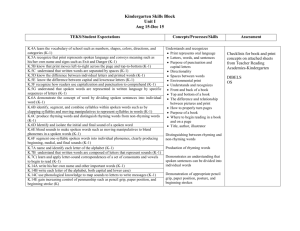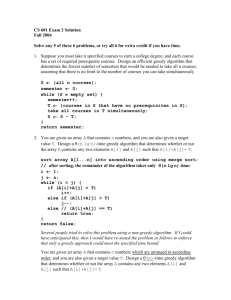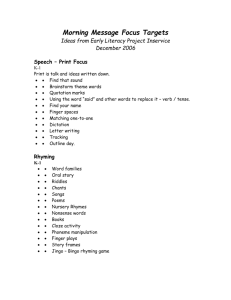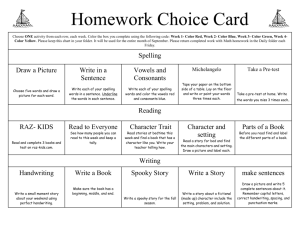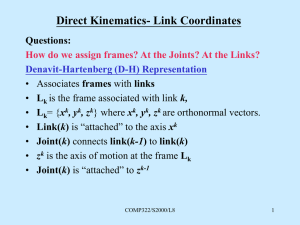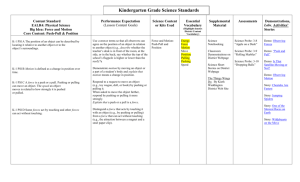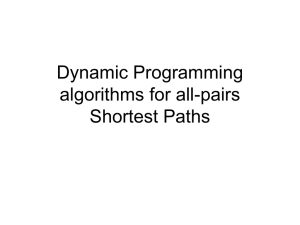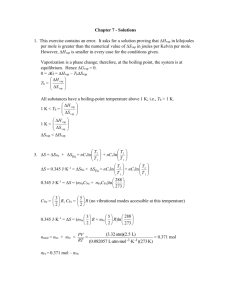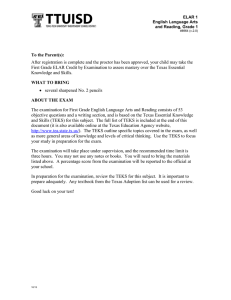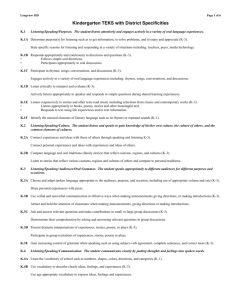punctuation consonants
advertisement
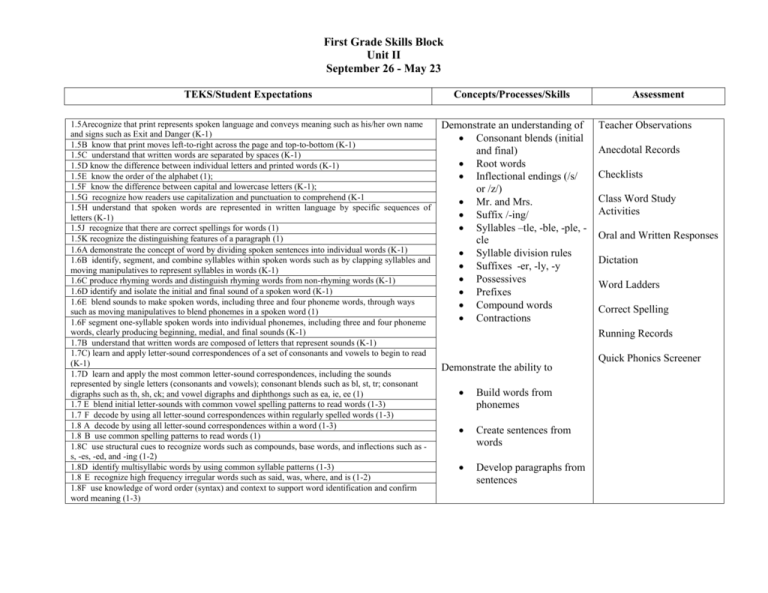
First Grade Skills Block Unit II September 26 - May 23 TEKS/Student Expectations Concepts/Processes/Skills 1.5Arecognize that print represents spoken language and conveys meaning such as his/her own name and signs such as Exit and Danger (K-1) 1.5B know that print moves left-to-right across the page and top-to-bottom (K-1) 1.5C understand that written words are separated by spaces (K-1) 1.5D know the difference between individual letters and printed words (K-1) 1.5E know the order of the alphabet (1); 1.5F know the difference between capital and lowercase letters (K-1); 1.5G recognize how readers use capitalization and punctuation to comprehend (K-1 1.5H understand that spoken words are represented in written language by specific sequences of letters (K-1) 1.5J recognize that there are correct spellings for words (1) 1.5K recognize the distinguishing features of a paragraph (1) 1.6A demonstrate the concept of word by dividing spoken sentences into individual words (K-1) 1.6B identify, segment, and combine syllables within spoken words such as by clapping syllables and moving manipulatives to represent syllables in words (K-1) 1.6C produce rhyming words and distinguish rhyming words from non-rhyming words (K-1) 1.6D identify and isolate the initial and final sound of a spoken word (K-1) 1.6E blend sounds to make spoken words, including three and four phoneme words, through ways such as moving manipulatives to blend phonemes in a spoken word (1) 1.6F segment one-syllable spoken words into individual phonemes, including three and four phoneme words, clearly producing beginning, medial, and final sounds (K-1) 1.7B understand that written words are composed of letters that represent sounds (K-1) 1.7C) learn and apply letter-sound correspondences of a set of consonants and vowels to begin to read (K-1) 1.7D learn and apply the most common letter-sound correspondences, including the sounds represented by single letters (consonants and vowels); consonant blends such as bl, st, tr; consonant digraphs such as th, sh, ck; and vowel digraphs and diphthongs such as ea, ie, ee (1) 1.7 E blend initial letter-sounds with common vowel spelling patterns to read words (1-3) 1.7 F decode by using all letter-sound correspondences within regularly spelled words (1-3) 1.8 A decode by using all letter-sound correspondences within a word (1-3) 1.8 B use common spelling patterns to read words (1) 1.8C use structural cues to recognize words such as compounds, base words, and inflections such as s, -es, -ed, and -ing (1-2) 1.8D identify multisyllabic words by using common syllable patterns (1-3) 1.8 E recognize high frequency irregular words such as said, was, where, and is (1-2) 1.8F use knowledge of word order (syntax) and context to support word identification and confirm word meaning (1-3) Demonstrate an understanding of Consonant blends (initial and final) Root words Inflectional endings (/s/ or /z/) Mr. and Mrs. Suffix /-ing/ Syllables –tle, -ble, -ple, cle Syllable division rules Suffixes -er, -ly, -y Possessives Prefixes Compound words Contractions Assessment Teacher Observations Anecdotal Records Checklists Class Word Study Activities Oral and Written Responses Dictation Word Ladders Correct Spelling Running Records Demonstrate the ability to Build words from phonemes Create sentences from words Develop paragraphs from sentences Quick Phonics Screener First Grade Skills Block Unit II September 26 - May 23 TEKS/Student Expectations 1.8G read both regular and irregular words automatically such as through multiple opportunities to read and reread (1-3) 1.17A write his/her own name and other important words (K-1) 1.17E gain an increasing control of penmanship such as pencil grip, paper position, stroke, and posture (1) 1.17F use word and letter spacing and margins to make messages readable (1-2) 1.17G use basic capitalization and punctuation such as capitalizing names and first letters in sentences, using periods, question marks, and exclamation points (1-2). 1.20A write with more proficient spelling of regularly spelled patterns such as consonant-vowelconsonant (CVC) (hop), consonant-vowel-consonant-silent e (CVCe) (hope), and one-syllable words with blends (drop) (1-3) 1.20B write with more proficient spelling of inflectional endings such as plurals and verb tenses (1-2) 1.20C spell single syllable words that have r-controlled vowels such as burn or star; that have the final consonants f,l,s such as in miss or doll; or that have the ck as the final consonants such as in buck (1) 1.20D use resources to find correct spellings, synonyms, and replacement words (1-3) 1.20E) use conventional spelling of familiar words in final drafts (1) 1.21A use nouns and verbs in sentences (1) 1.21B compose complete sentences in written text, and use appropriate end punctuation (1-2) Concepts/Processes/Skills Assessment
